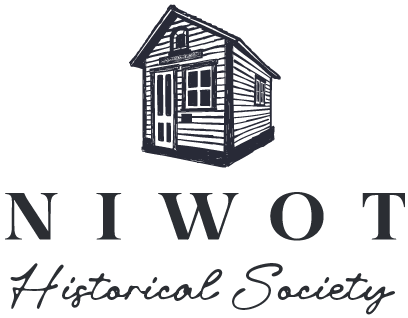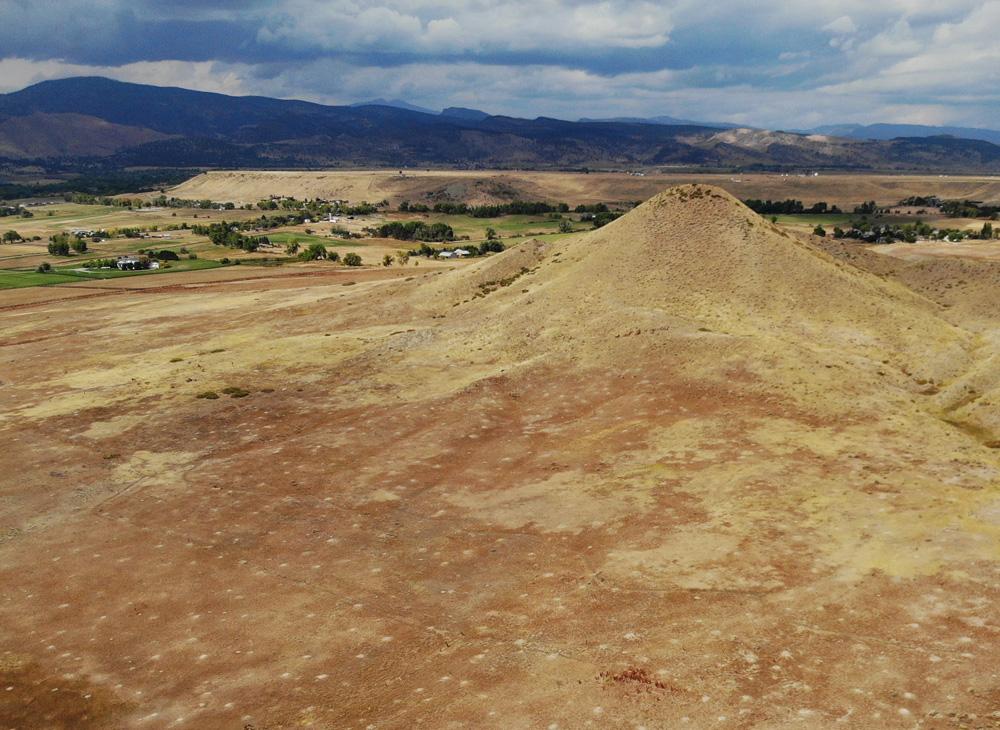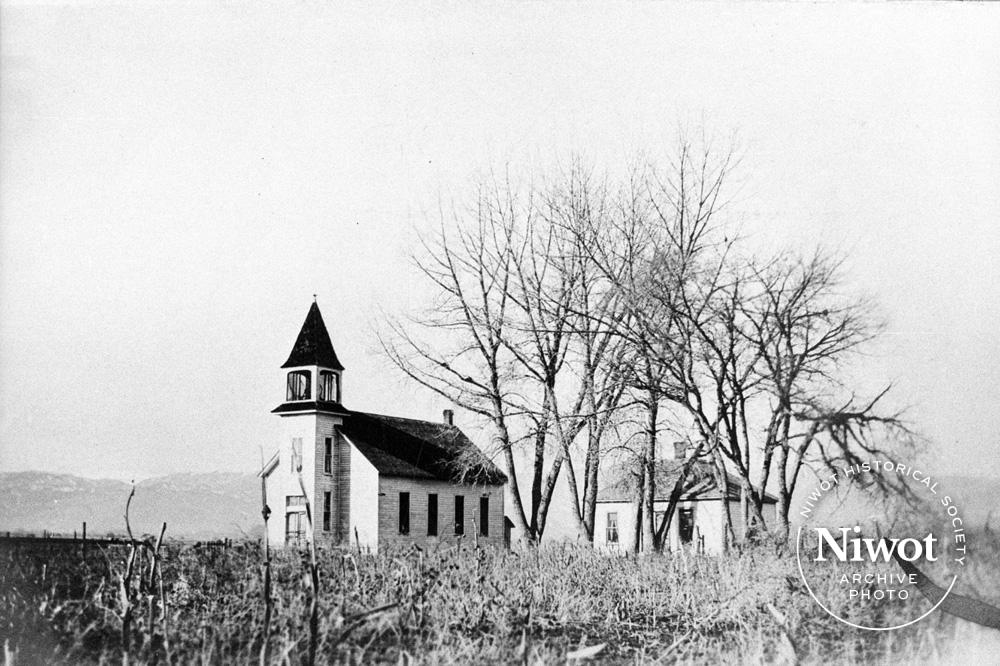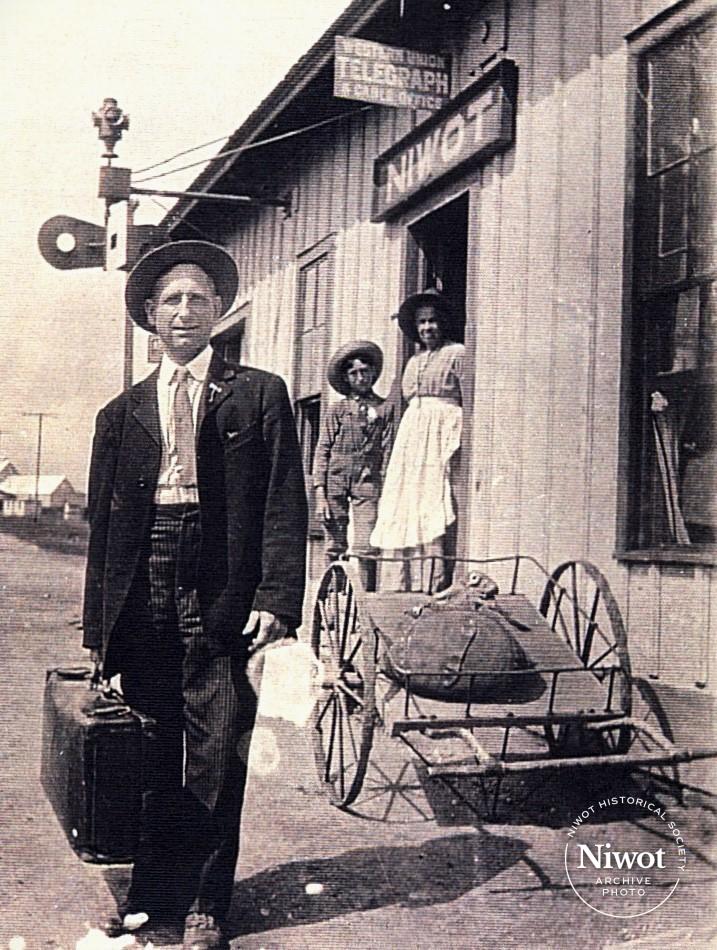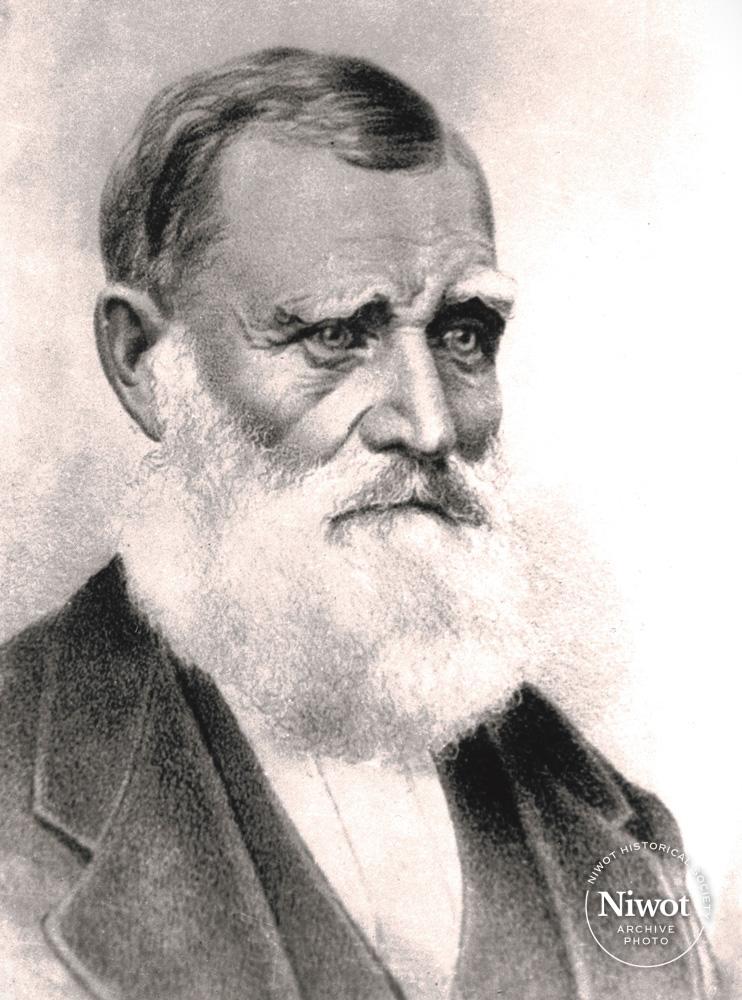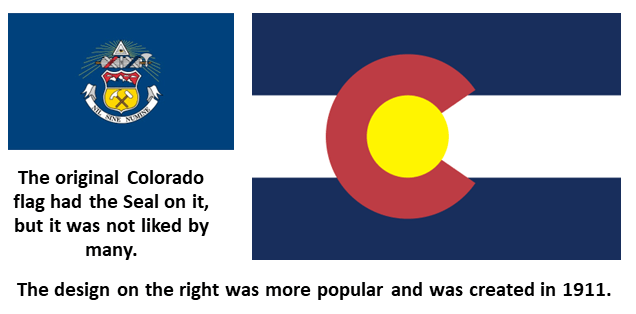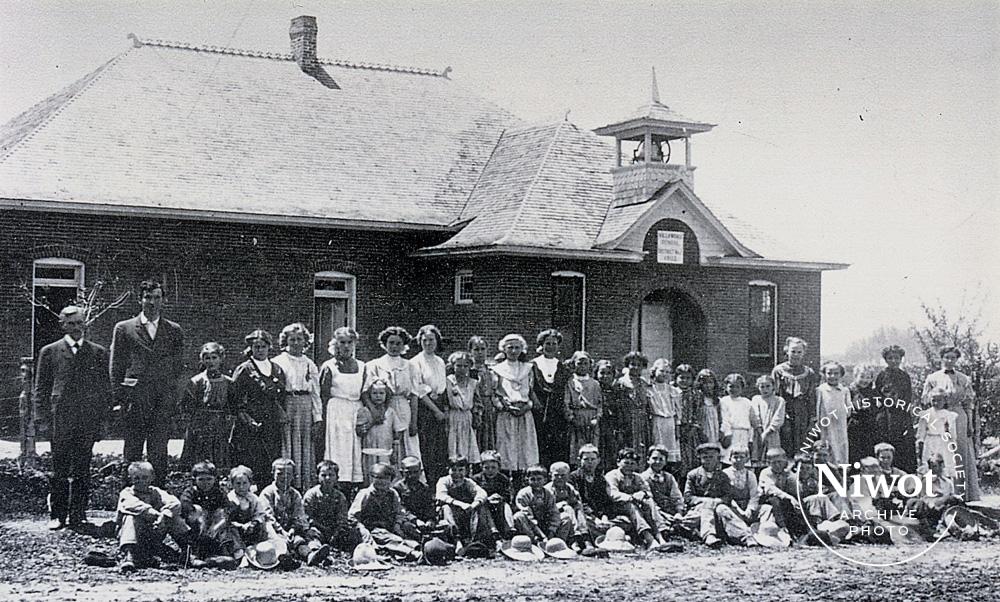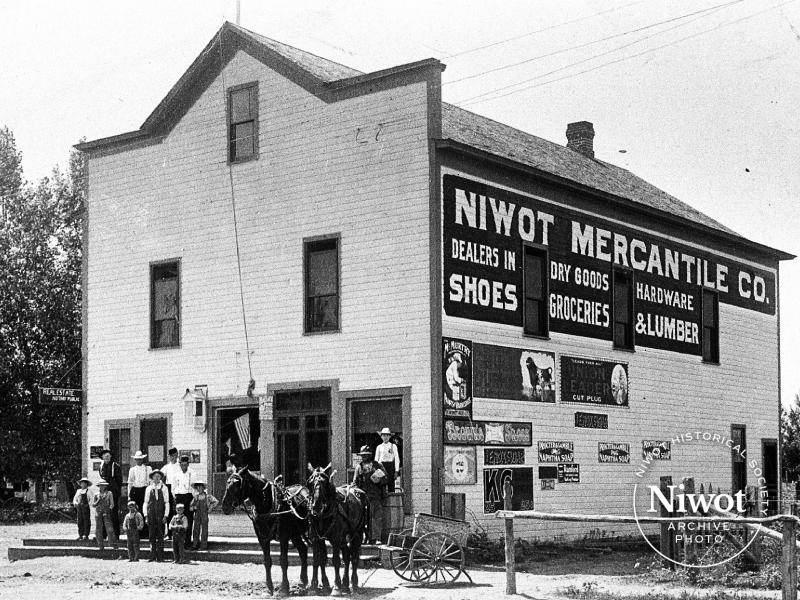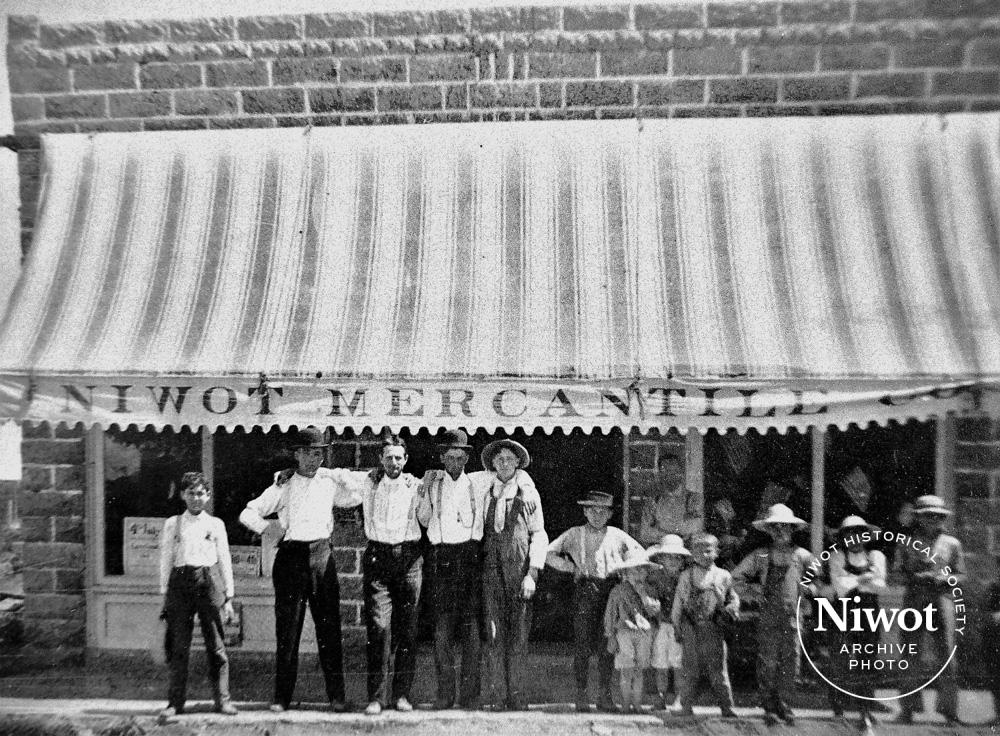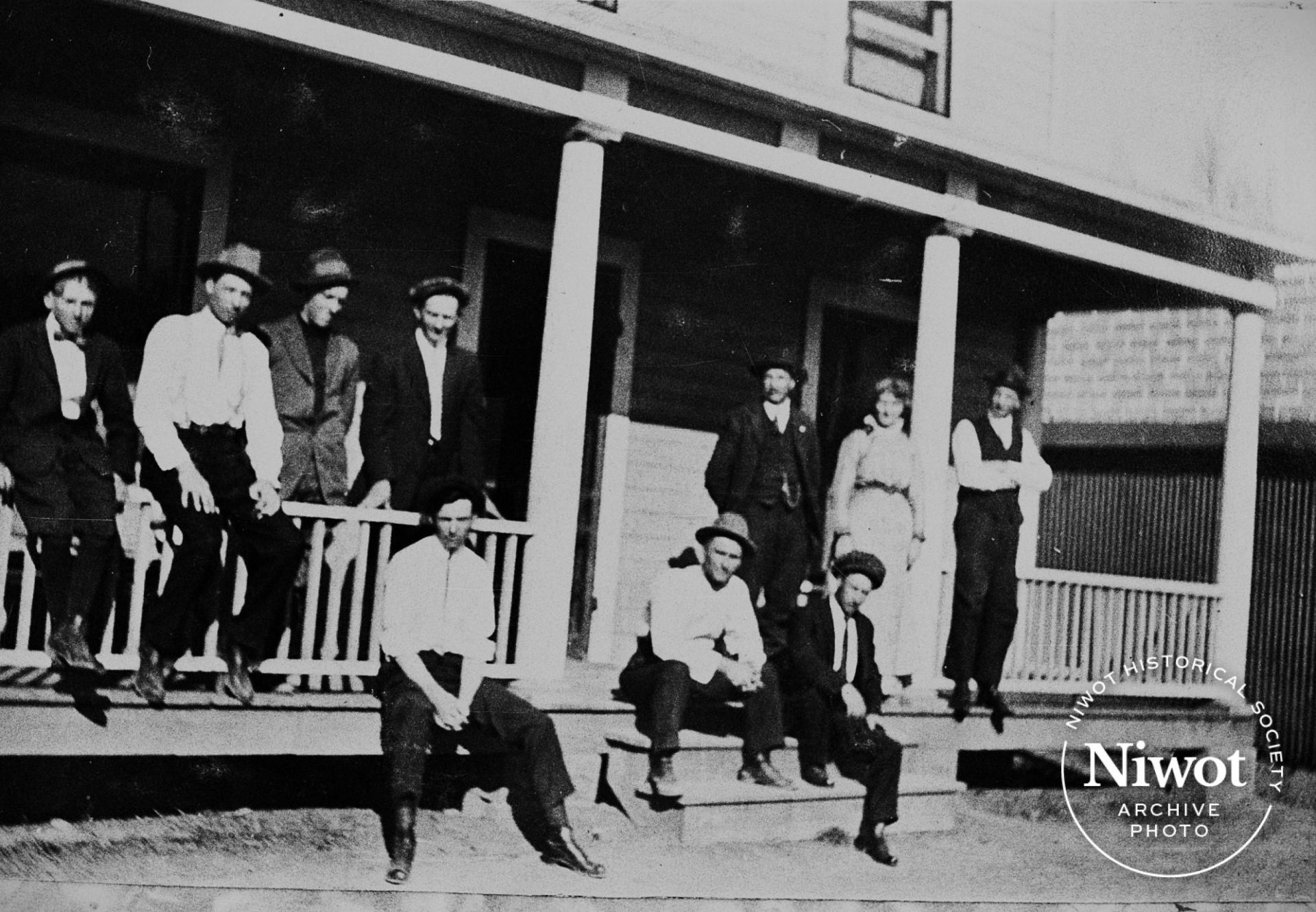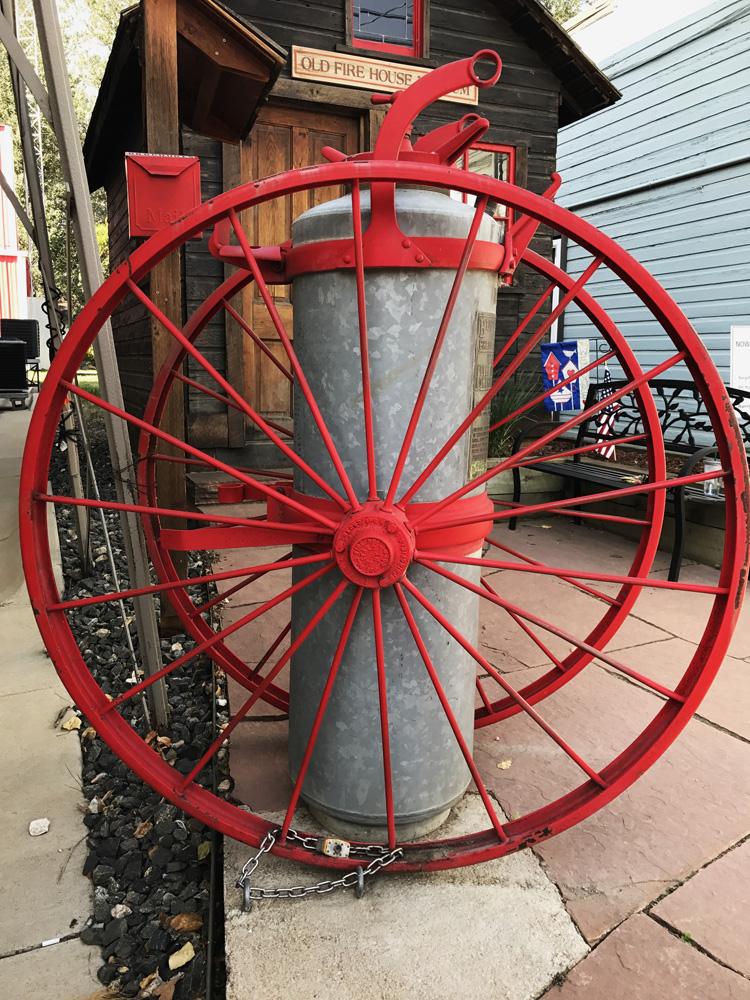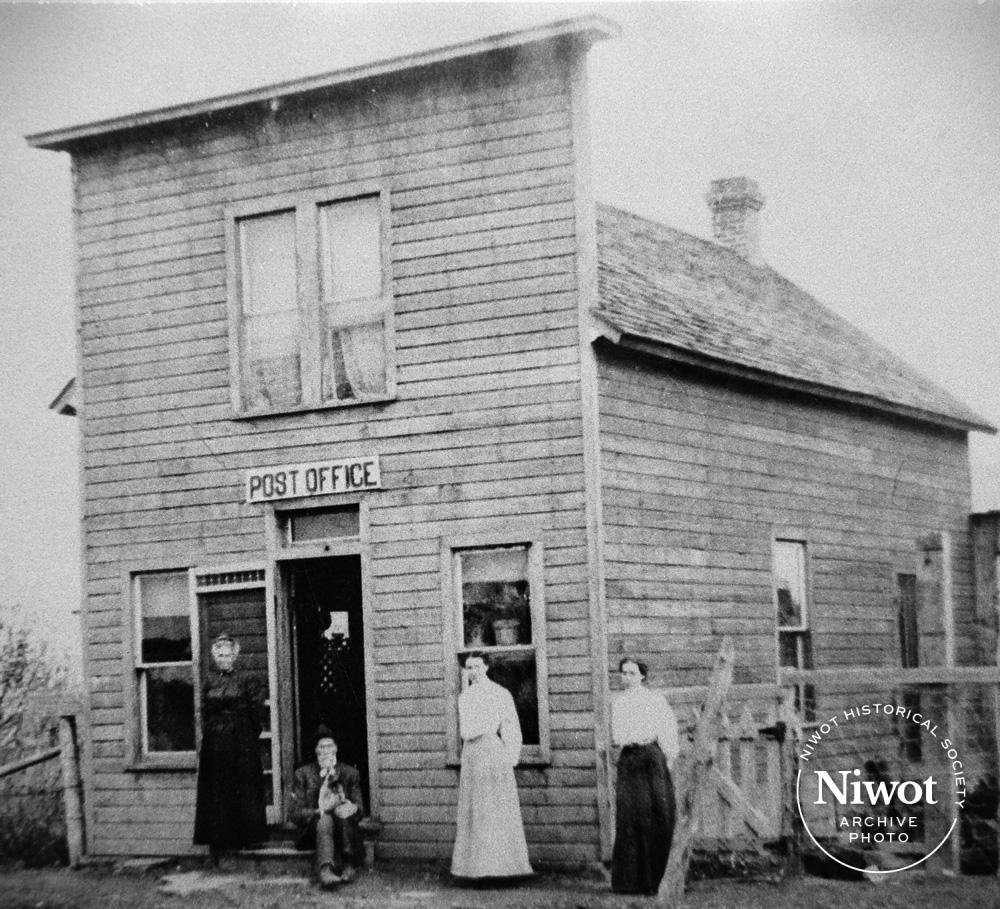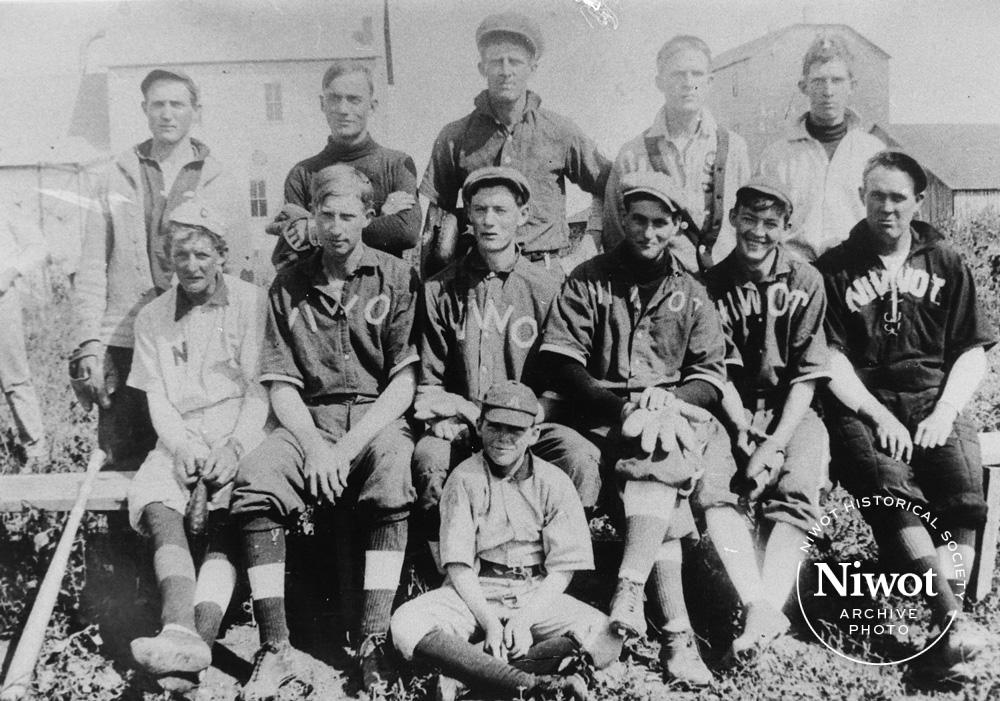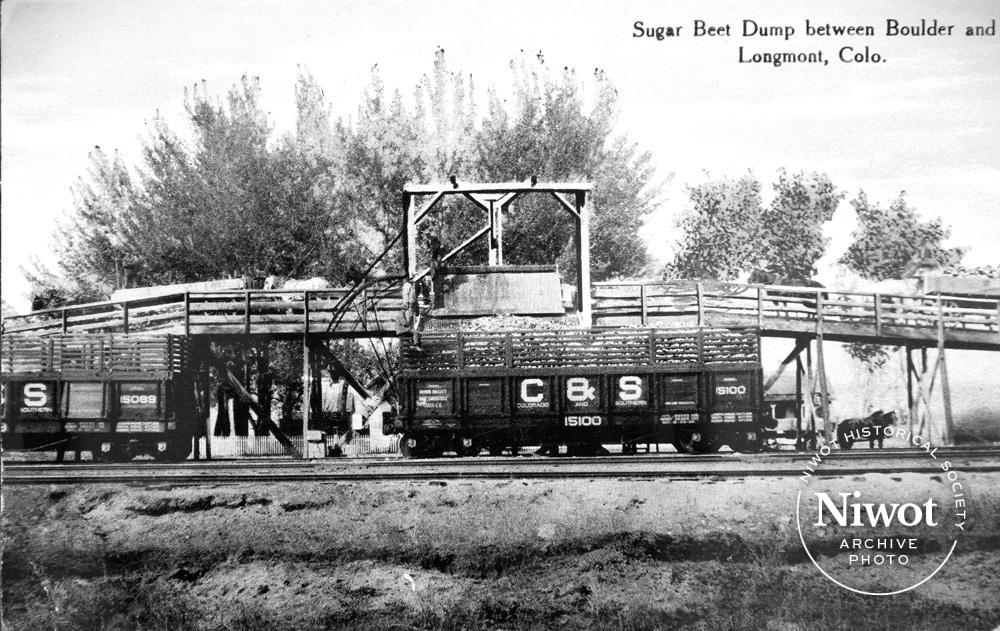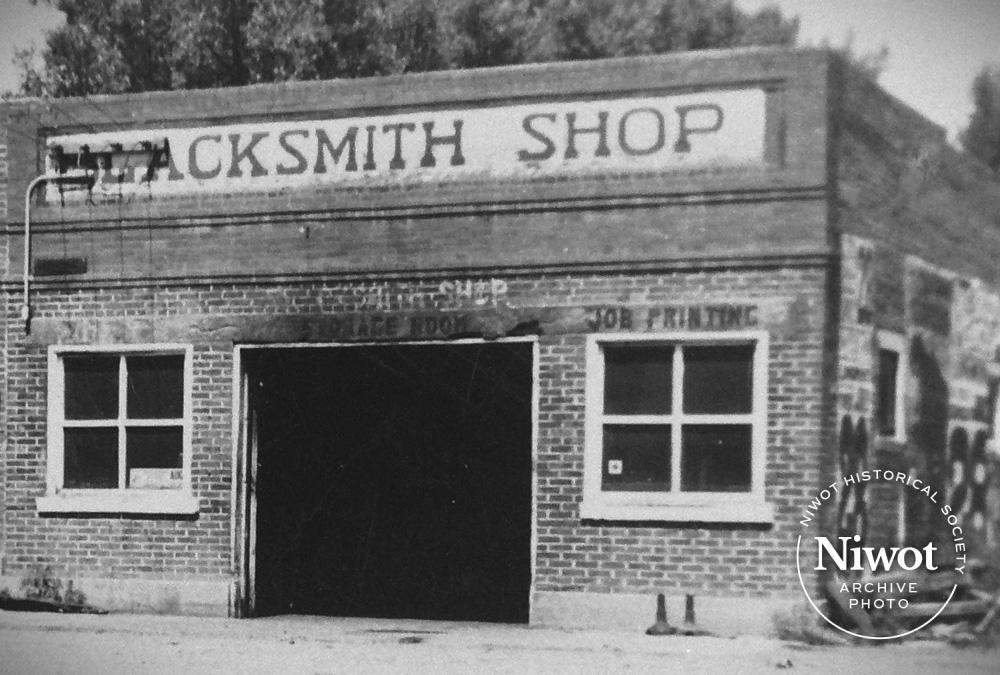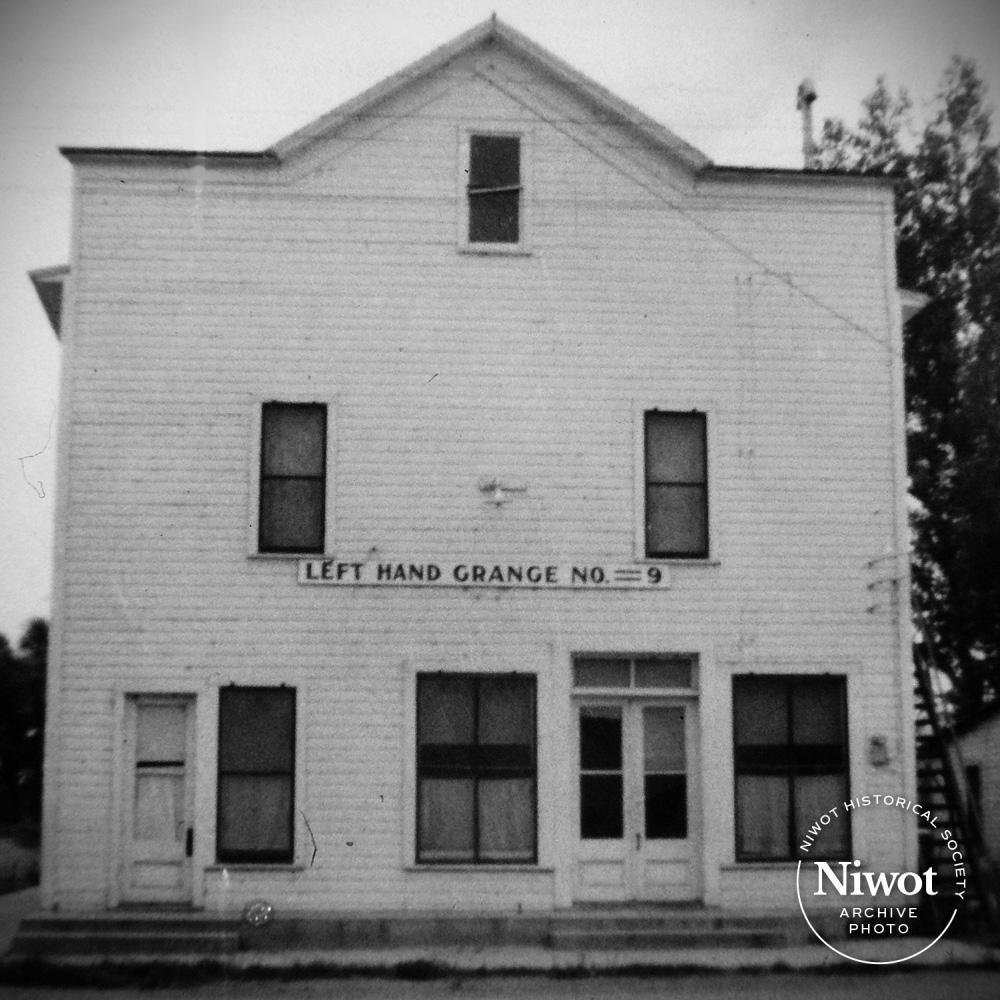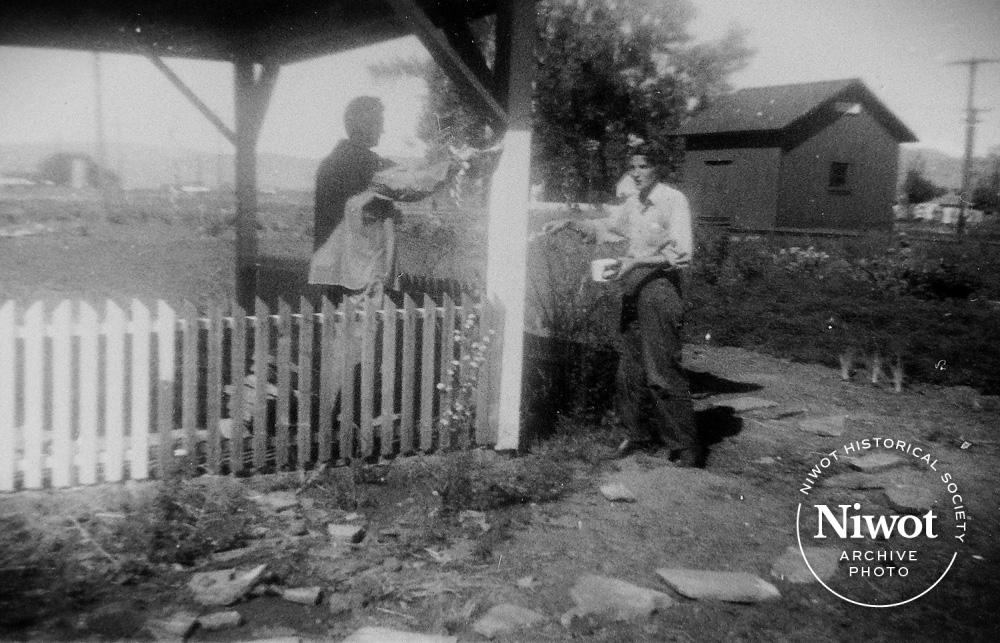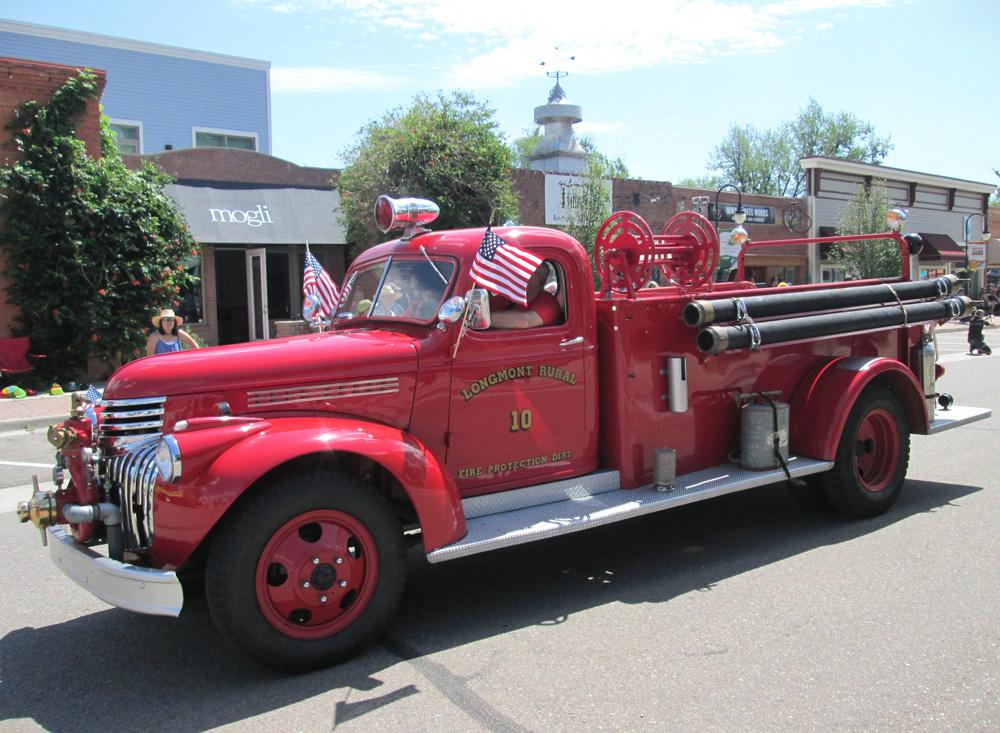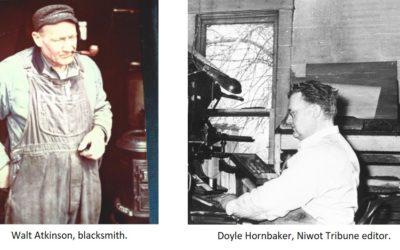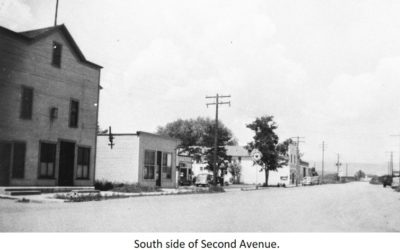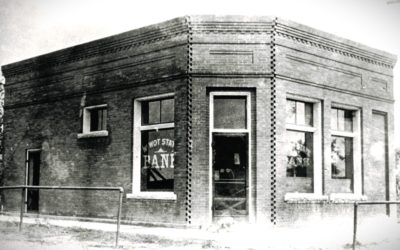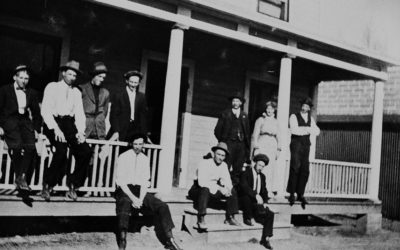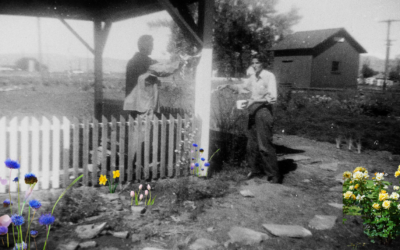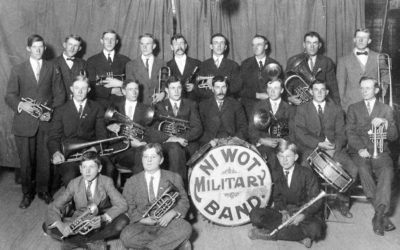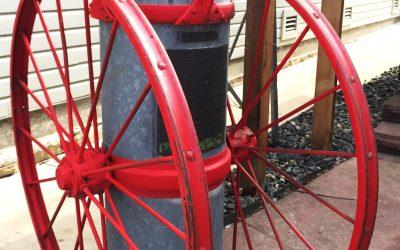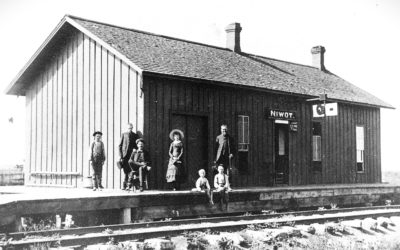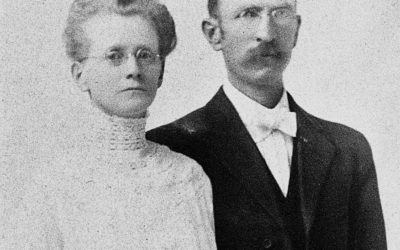History
OF NIWOT
-
1851
Niwot Area Tribes
The United States acknowledged the Arapaho and Cheyenne peoples in the Fort Laramie Treaty of 1851 as their traditional territory in the Boulder and St. Vrain valley. Haystack area was the campground for the Arapaho tribe. In addition, Haystack Mountain was a lookout for herds of bison, deer, any travelers or fur traders. It was easy to see any movement since there were few trees.
Drone Photo, September 2021 ~ Courtesy James “Tito” Roberts
-
1870
Left Hand United Brethren Church is chartered
Left Hand United Brethren Church was chartered in 1870. As it stood west of Niwot across the tracks.
-
1873
Colorado Central Railroad
Colorado Central Railroad laid tracks from Boulder City to Longmont to Cheyenne, WY to connect with the Intercontinental Railroad. Will T. Wilson served as station agent and telegrapher when the Depot opened. Mr. Wilson was usually found seated at the window for buying tickets on the train or sending a telegraph.
-
1875
Niwot was Platted
Niwot was Platted by Porter T. Hinman and Ambrose S. Murray. Niwot was mapped on a diagonal grid as it straddled both side of the railroad tracks.
-
1876
Colorado became a state
Colorado joined the union on August 1, 1876, as the 38th state. It is America’s eighth-largest state in terms of landmass. Located in the Rocky Mountain region of the western United States the state’s abundant and varied natural resources attracted the Indiginous Peoples. First explored by Europeans in the late 1500s. The Spanish explorers referred to the region as “Colorado” I reference to some of its red soil. The area was ceded to the United States in 1848 with the Treaty of Guadalupe Hildago that ended the Mexican-American war of 1846-1848.
-
1902
Willowdale School
The second school building for Niwot students was called Willowdale. It was of brick construction and located at Niwot Road and Franklin Street. This school taught students in grades 1-8 and was overcrowded shortly after it was occupied. The third school in Niwot was dedicated in 1910. It was a brick two-story school.
-
1907
Nelson Hall / Mercantile
John Nelson was Swedish-born and had been a wagon maker in Niwot before 1900. As automobiles were invented, there was not the same demand for wagons so John entered the construction trade and built many of the early 1900s buildings in Niwot. The tallest building was Nelson Hall which was a mercantile, offices, and the upstairs was a meeting hall.
-
1907
Niwot Mercantile
Niwot Mercantile, 190B Second Avenue, is a unique structure because it is Niwot’s first cement block building. It was a pool hall, ice cream parlor, and in the back room, you could soak in a hot bath for 25 cents. Many guests at the Livingston Hotel would come for a bath because the Hotel did not have running water.
-
1907
Livingston Hotel
Livingston Hotel, 136 Second Avenue. George Livingston hired Jim Hood to construct the hotel. Guests could conveniently walk from the Niwot Depot to the hotel. Most guests were families or single male laborers.
-
1910
Fire Cart arrives
Fire Cart arrives from Buffalo, New York to aid in fighting fires. It needed a covered enclosure so the 10ftx14ft shed was built. The Fire Cart is on display at the Firehouse Museum and it was honored as one of “The Top Ten Artifacts In Colorado” in 2017.
-
1911
Post Office
150 Murray Street, was a two-story wood building constructed on Murray Street. The first floor served as the Post Office and the second floor was housing for the postmaster and family. Julia Stockley was first woman postmaster, serving in this role from 1911-1914.
-
1914
Niwot Baseball
Local fans contacted the Northern Colorado Baseball League with the intention of the “Niwot Farmers” baseball team playing in league games. Throughout the years, parents and fans have volunteered in various capacities to hand groom a place for teams to play. Often times a local farmer would designate a few acres on which the teams could play. Eventually local farmers would bring their tractors to level the fields for games. Today the coaching and chores are still volunteers from families or fans of the game. Today the baseball diamonds used by Niwot Youth Sports are still managed by volunteers in the Niwot community.
-
1916
Sugar Beet Dump Ramp
Sugar Beet Dump Ramp along Murray Street. Sugar beets were introduced as a farm product in 1903. After harvesting the beets would be hauled to the railroad tracks, unloaded onto the ground and then when a railroad car was available the beets had to be manually loaded onto the train car. The Sugar Beet Dump Ramp was constructed in 1916 and the wagons of sugar beets could be dumped directly into a railroad car on the track below the structure.
-
1921
Blacksmith Shop
124 Second Avenue. George Atkinson built this blacksmith shop on the site of the former blacksmith business. George was a skilled welder and often had equipment lined up in the street waiting their turn to be repaired. He also created branding irons for customers. The doors from the blacksmith shop, with brands burned into the wood, are archived with the Niwot Historical Society and were awarded as one of “The Top Ten Artifacts In The State Of Colorado” in 2016.
-
1945
Left Hand Grange No.9
Left Hand Grange No.9 acquired Nelson Hall . Organized in 1873, when Nelson Hall was available, the Grangers purchased the building. Originally it was a meeting place for farmers in the Niwot area and today it is a meeting place for community meetings, events and it is available for rent by individuals or organizations.
-
1946
Niwot Home & Garden Club
By 1946 Niwot had two hundred residents and a community garden was designed and created at the corner of Second Avenue and Murray Street near the Niwot Depot. The flower garden surrounded the original 1912 band stand which was a community gathering place and served as a welcoming environment which greeted passengers arriving in Niwot on the train. The local women had dug the soil and hauled materials and plants from their home gardens.
-
1968
Fire Engine #10
Left Hand Men’s Club forms the Niwot Volunteer Fire Department. Only Mike Holubec and Pete Plantiga, volunteers in the Men’s Club were the only two with fire fighting experience so they provided training for the group. Fundraising to build a fire house for the Engine began and a lease with the Left Hand Grange to construct the garage on their property. Engine #10 appears in parades and many Niwot events. Today Engine #10 is owned by the Mountain View Fire Protection District who serves the Niwot area for fire protection.
-
2003
CB&Q Caboose
CB&Q Caboose was donated to Niwot by the Boulder County Railroad Historical Society. Volunteers work to restore it for display in Whistle Stop Park. Caboose #14649 was built in 1907. It rolled on the rails for the Chicago, Burlington & Quincy (CB&Q) Railroad. The caboose was retired in the 1950s. A standard caboose was furnished with bunk beds, a desk and a coal stove for heat and cooking meals. The train crew would spend several days on the trains. In the late 1900s, crews were not on a delivery route as many days and the caboose faded away when it was no longer used.
Stories
OF NIWOT
Niwot Stories – More Recollections of an 8-year-old boy in the 1960’s
Back in the 1960’s, the Livingston Hotel was no longer an operating business, however there was an old woman who lived there. What was remarkable about her is that she would sit out on front porch on a summer evening with her pet raccoon. My sister and I would stop by...
Niwot Stories – Recollections of an 8-year-old boy in the 1960’s
To provide a perspective, or ‘map’, of Niwot’s 2nd Avenue as I recall in the mid 1960’s, here is a description of the businesses that were there. This street was lined with shops, homes, and small businesses. At the West end of the street, on the South side, was the...
Niwot State Bank
The Niwot State Bank 102 Second Avenue - Built in 1909 The architecture of the Niwot State Bank was typical of early 1900-era banks with the front door set on a diagonal to greet customers from two streets. The bank was constructed at the intersection of Murray Street...
The Hotel Livingston
The Hotel Livingston 136 Second Avenue - Built in 1907 The Hotel Livingston was built by George Livingston and hotel guests could conveniently walk from the Niwot Depot to the hotel. George Livingston hired Jim Hood to construct the hotel in 1907. Receipts from...
Niwot Home & Garden Club
By 1946, Niwot had around two hundred residents. A community garden was designed and created at the corner of Second Avenue and Murray Street by a group of ladies who started the Niwot Home & Garden Club. The flower garden was around the original Niwot bandstand...
1912 – Community Bands and Bandstands
The photo above is of the first members of the Niwot Military Band. Small town bands were often called “military” bands because musical equipment consisted of drums and brass instruments. Members were all volunteers who had an instrument and could play music. Band...
The Fire Cart and Fire House
The Fire Cart arrived in Niwot in 1910 from Buffalo, New York. The instructions of care for the Fire Cart stated that it could not be stored outside in the weather. Town volunteers constructed the building that would shelter the Fire Cart. The Fire Cart was honored...
The Niwot Depot
The Niwot Depot Built in 1873 The Colorado Central Railroad laid tracks from Boulder City to Niwot to Longmont and north to Cheyenne, Wyoming in 1873. This set of tracks connected with the Intercontinental Railroad which meant there would be more timely delivery of...
Doctor & Pharmacy/ Newspaper – 198 2nd Ave
Niwot's Doctor and Pharmacy Built in 1909, Niwot's first resident doctor set up his practice at the northwest corner of Second Avenue at Franklin Street. Before Dr. Dasef was a resident doctor and again after he moved from Niwot, patients needed to travel to...
